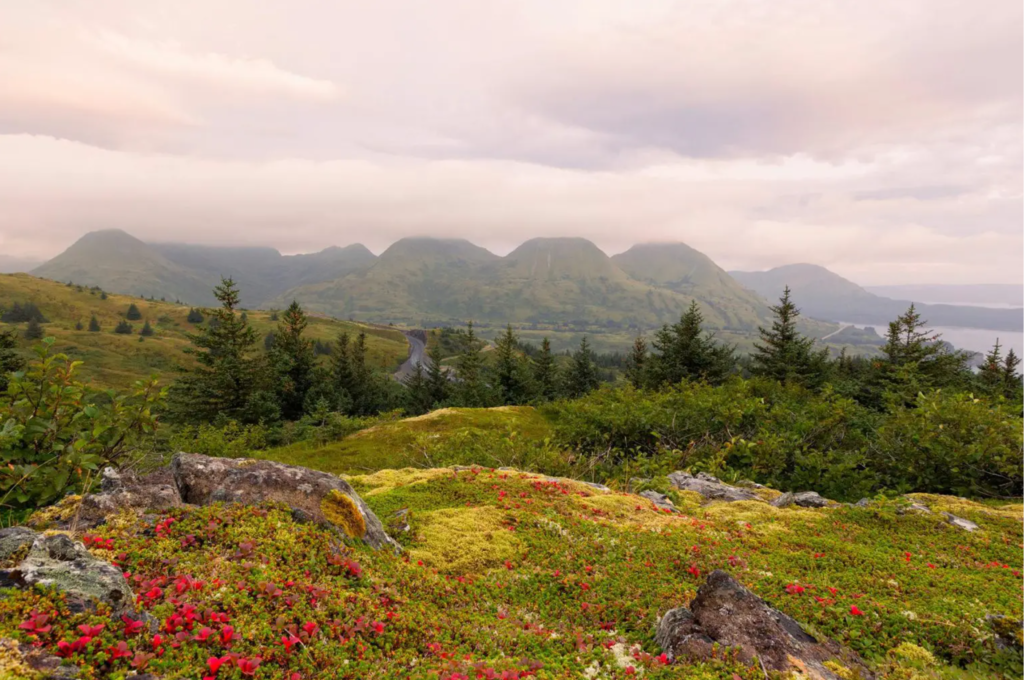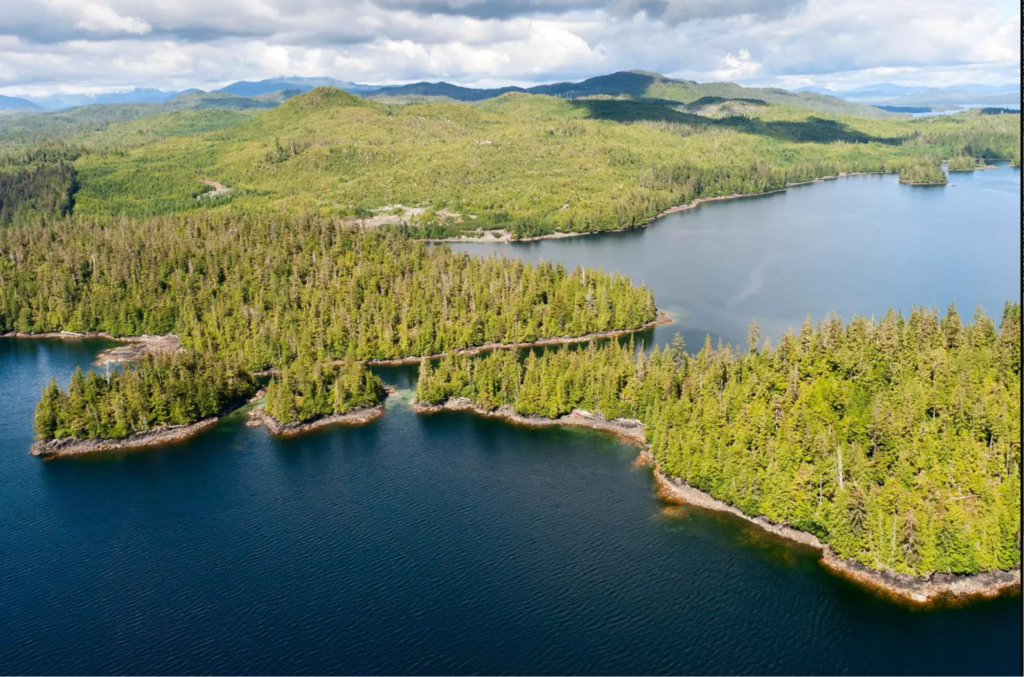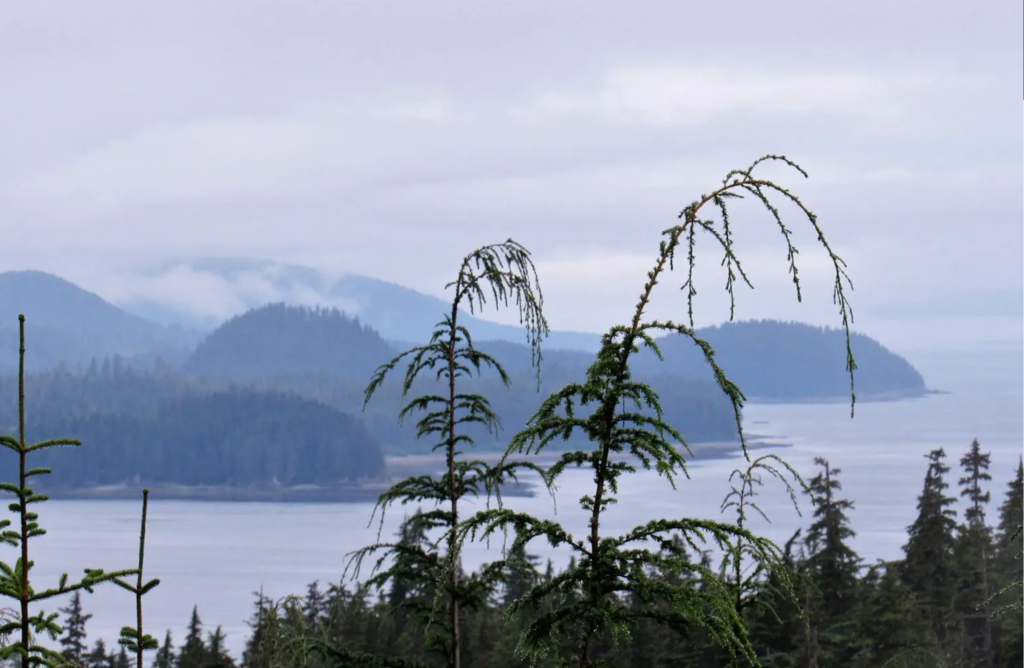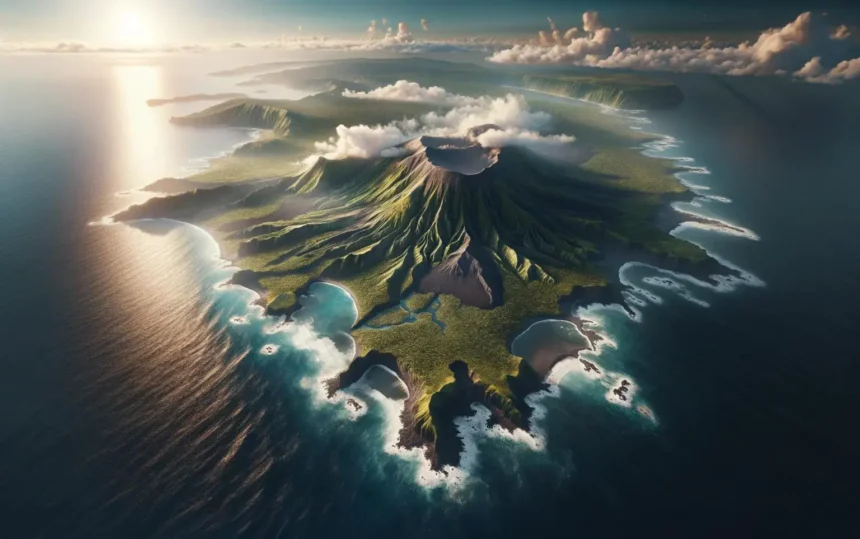The vastness of the United States is home to many beautiful natural features and landscapes. Particularly islands possess a peculiar charm. American islands depict the wonders of nature vividly, from the tropics of Hawaii to the untamed landscapes of Alaska. Explore the five largest islands in the United States as we set out on a trip via science and geography.
1. Hawaii’s Big Islands

Located on the Big Island of Hawaii, Akaka Falls State Park is a verdant haven that boasts some of the most scenic waterfalls in the state. The park’s centerpiece, the Akaka Falls, plunges spectacularly 442 feet into a stream-eroded gorge, captivating visitors with its majesty. A well-maintained loop trail meanders through lush tropical vegetation, offering glimpses of both the Akaka Falls and the smaller Kahuna Falls. Along the pathway, one can marvel at vibrant orchids, wild ferns, and the soothing sounds of nature, making it a must-visit for nature enthusiasts and those seeking a tranquil escape.
Area: 4,028 square miles approximately
This is the youngest islands in the Hawaiian chain and is also referred to as Hawai’i Island. Thanks to the active Kilauea volcano, which has been erupting continuously since 1983, the island is still expanding.
The Big Island is home to a diverse range of cultures. The island is a cultural melting pot, with ancient petroglyphs created by the native Hawaiians and contemporary coffee farms influenced by immigrant settlers.
Natural Phenomenon: The island is a remarkable microcosm of the world’s climates in one location due to its different climate zones, which span from tropical rainforests to arid deserts and snow-capped mountains.The Mauna Kea is the tallest mountain in the world when measured from its base on the ocean floor, while only rising 13,796 feet above sea level. It reaches to a height of roughly 33,500 feet, dwarfing Mount Everest!
ALSO READ :Scientists Create A Bionic Hand That Integrates With The User’s Nervous And Skeletal Systems
2. Kodiak Island, Alaska

Kodiak Island, Alaska has a history that traces back around 7,500 years with the Alutiiq people. Their heritage can still be seen in the many archaeological sites, festivals, and museums across the island.
Dimensions: Approximately 3,595 square miles
The largest subspecies of brown bears, the renowned Kodiak bear, calls it home.
Marine Bounty: There is an abundance of marine life in the waters of Kodiak. Fishing is the island’s main source of income, and the Kodiak King Crab, which is prized by foodies all over the world, is its most well-known catch.
Scientific Tidbit: The environment of Kodiak is a shining example of the diverse species found in the North Pacific rainforest. In particular, interactions between salmon and the island’s predators are of particular interest to scientists who study this habitat.
3. Puerto Rico

3,515 square miles, about
Interesting Fact: Although Puerto Rico is a U.S. territory and not a state, it has a long history that combines Taino, Spanish, African, and American influences.
Natural Beauty: The only tropical rainforest in the United States’ National Forest System, El Yunque National Forest, features hiking routes with panoramic vistas, waterfalls, and the distinctive calls of the local coqu frog.
Old San Juan is a UNESCO World Heritage site known for its colourful colonial architecture and cobblestone pathways. For centuries, it has kept out pirates and invaders with the help of fortifications like El Morro and La Fortaleza.
Scientific Snippet: The Arecibo Observatory was one of the biggest and most potent radio telescopes in the world before it collapsed in 2020. It was used by researchers to examine celestial objects, make significant astronomical discoveries, and even look for intelligent extraterrestrial life.
4. Prince of Wales Island, Alaska

Tlingit communities have thrived on Prince of Wales Island, Alaska for thousands of years. Their art, totem poles, and cultural events, like potlatches, continue to celebrate and preserve their rich heritage.
Dimensions: 2,577 square miles approximately
Despite being the fourth-largest island in the United States, it only has 6,000 or so residents.
Exploring caves: The island is renowned for its extensive karst environment. Spelunkers and geologists alike are drawn to the El Capitan Pit, one of the deepest vertical caves in the United States.
Snippet of Science: For geologists and palaeontologists, the island is a gold mine. Many of the island’s limestone caverns have uncovered intriguing artefacts and fossils that have provided insight on North America’s prehistoric occupants.
5. Chichagof Island, Alaska

Logging used to be the primary industry on Chichagof Island, Alaska. Today, the focus has shifted to sustainable timber harvesting, ensuring that the majestic forests remain for future generations.
Area: 2,048 square miles approximately
It has the largest density of bears per square mile in the world, along with its neighbour Baranof Island.
Adventure Haven: Hoonah, the island’s largest hamlet, serves as a starting point for tourists looking for outdoor adventures, such as zip-lining through towering trees or observing bears.
Snippet of Science: Due to the abundance of species found in its deep temperate rainforests, Chichagof is a sanctuary for scientists. Old-growth Sitka spruce woods on the island are particularly useful for studying climate change because they collect and retain a lot of carbon dioxide.
In Conclusion
These islands are more than just big pieces of land; they are also active ecosystems, historical archives, and centres of scientific research. In addition to satisfying the wanderlust of the geographically minded, exploring them offers insightful information about Earth’s past, biodiversity, and complex web of life. The United States continues to be a playground for scientists and environment lovers alike due to its wide terrains and different scenery.
ALSO READ :Da Vinci’s Secret: Researchers Find Toxic Pigments In The Mona Lisa




































